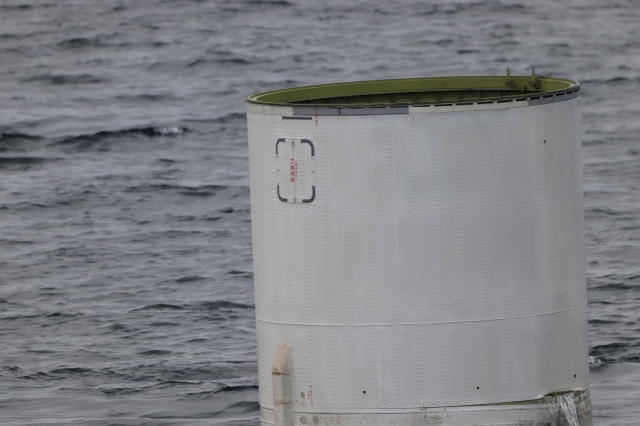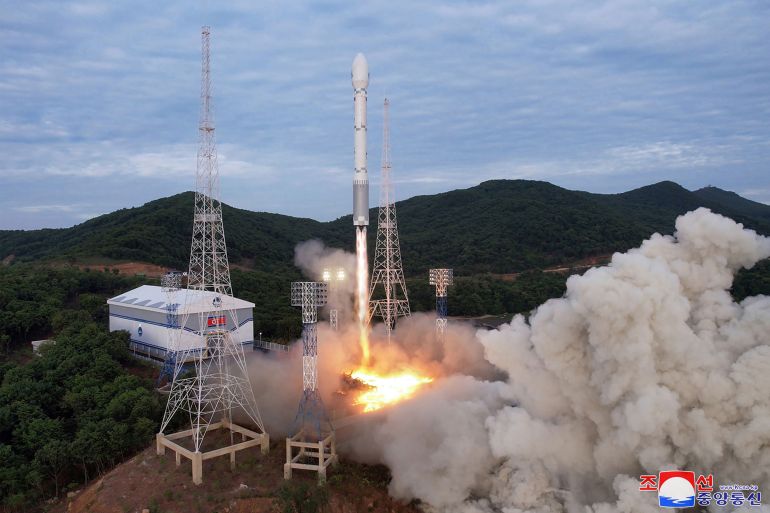South Korea’s defense chief announced on June 1 that the country’s military is actively involved in an operation to recover a sunken component of a purported North Korean space rocket.
Nerve-Wracking Footage Of Patriot Missile Falling Over Moving Traffic In Kyiv Captured On Dash Cam
The part of the rocket is believed to be the ill-fated vehicle’s second stage, and efforts are underway to retrieve it.
During a parliamentary session, Defense Minister Lee Jong-sup disclosed that the South Korean Navy is actively recovering a 15-meter component of the submerged rocket.
The section currently rests at a depth of 75 meters underwater in the Yellow Sea. Minister Lee estimated that the retrieval operation would likely require two more days.
North Korea launched a rocket purportedly carrying a satellite on the morning of May 31.
However, in a rare admission of failure, state media reported that the mission ended in disappointment as the second-stage engine experienced abnormal ignition, causing the rocket to crash into the sea.
Lee informed lawmakers that the search for the third stage and payload is still ongoing. He explained that the wreckage identified so far is likely the rocket’s second stage.
The Joint Chiefs of Staff of South Korea have shared photographs of the identified section, which unfortunately sank to the sea floor.
The naval recovery operation has encountered challenges due to the part’s substantial weight and limited underwater visibility, hampering retrieval efforts.

Besides that, the South Korean Navy managed to salvage a portion of a projectile launched by North Korea on May 31. The retrieved object is characterized as a hollow cylinder, which connects the propellants of the first and second stages.
When questioned about the technological similarities between the rocket and an intercontinental ballistic missile (ICBM), the defense minister affirmed that they share the same underlying principles.
“The same principle applies to the launch vehicle for a satellite and the missile to carry a warhead,” the minister said.
Lee also assessed that the launch on May 31 occurred at a newly constructed launching facility located on the west coast.
According to Lee, the first stage of the rocket appears to be powered by a liquid-fuel engine. Additionally, he mentioned that the satellite carried by the rocket is estimated to have a resolution of one meter.
Experts noted that the resolution of a typical military spy satellite is usually even higher, with sub-meter accuracy.
North Korea Vows To Launch Spy Satellite Soon
A day after the unsuccessful launch of North Korea’s first space launch vehicle, the country publicly shared images of the launch through state media outlets.
The Korean Central News Agency (KCNA), a state-run news agency primarily targeting foreign readers, released two photographs capturing the moment of the Chollima-1 rocket launch, which carried North Korea’s first reconnaissance satellite.
The photos depict the rocket taking off from a satellite launching site in Chosan County, North Pyongan Province. Notably, facing the sea, the launch site is believed to be a newly constructed facility rather than the existing Seohae Satellite Launch Center.
North Korea had been working on a new launch site on a nearby beach, roughly three kilometers away from the previous location, although the construction had only recently been completed.
In a closed-door meeting of South Korea’s National Assembly’s intelligence committee, the National Intelligence Service revealed a potential cause for the launch failure.

According to the service, the rushed execution of the launch while the construction of the launch site was still unfinished could have contributed to the unsuccessful outcome.
Simultaneously, the South defense minister emphasized that the failed launch would be considered a violation of a United Nations Security Council resolution.
Meanwhile, North Korea’s Kim Yo-jong, the sister of leader Kim Jong Un, conveyed through state media KCNA on May 31 that her country is preparing to place a military spy satellite into orbit.
She also expressed North Korea’s commitment to strengthening its military surveillance capabilities.
“It is certain that (North Korea’s) military reconnaissance satellite will be correctly put into space orbit in the near future and start its mission,” Kim said.
Furthermore, in response to the condemnation of the launch by Washington and other nations, Kim Yo-jong dismissed their criticisms as an infringement on North Korea’s sovereign right to engage in space development.
- Contact the author at ashishmichel(at)gmail.com
- Follow EurAsian Times on Google News




